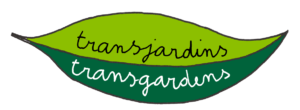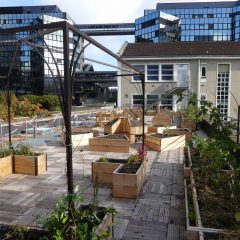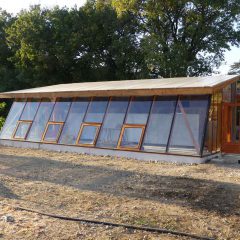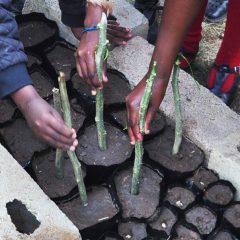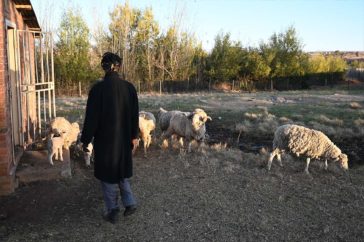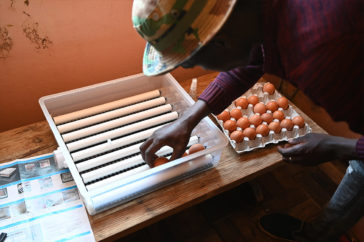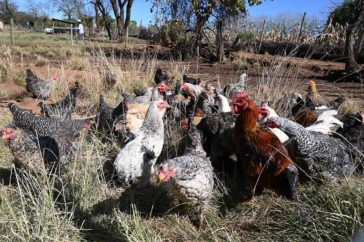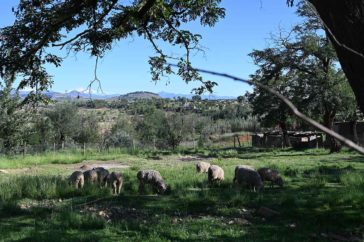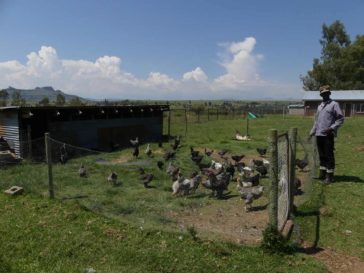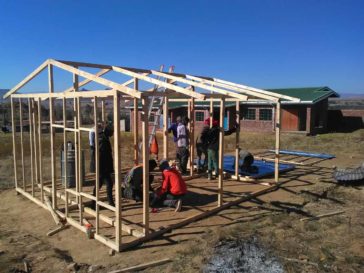Associating breeding and crop production is a technique commonly used in agroecology and agroforestry.
Trees can protect animals with their shading, provide forage, while animals such as chickens can eat worms from fallen fruits and avoid their spread, weeding the ground and provide compost for the garden.
In this section, transjardins present some examples of associations, and structures created to alternate the presence of animals and crops on parcels.
You will find below the articles published in this category.
You can also refine your reading by choosing a sub-section:
One of the cows at the St Paul educational farm for the deaf and hard of hearing has given birth to a calf. The farm now has six cows.
The flock, composed of 10 sheep when the farm was launched (3 males and 7 females), has increased by 50% in 2 years thanks to three new births this year. The sheep bring an additional income for the farm with … Read More
The young people of St Monica’s farm have started to use the incubator financed by The Ivory Foundation. Before any use, the equipment and eggs must be disinfected to prevent disease transmission. The eggs are then placed slightly apart on … Read More
The flock of chickens at St Monica’s Farm has grown significantly since the garden started. There are now about 50 hens of different species with varied and colourful plumage. These hens are raised for egg and meat production, providing an … Read More
During their visit to the Grand Potager, the students of the Lauris school paid a visit to the working hens. They are retired hens, which have been collected by the Grand Potager to spend a quiet retirement, after having spent … Read More
Lesotho is a large producer of wool. Thus, many shepherds live in the mountains with their animals for part of the year, as shearing sheep is a traditional activity in this mountainous country. It was therefore important to valorize it … Read More
On Saint Monica’s farm, in order to diversify resources for young people, a small livestock farming activity has also been set up. Herewith, around twenty hens raised in open air and ten sheep were acquired thanks to the support of … Read More
The henhouse of free range native hens is booming! The laying hens have been isolated and there have been several births. Therefore the number of hens is about 80 hens. The vegetable garden is covered with cabbage and spinach, adapted … Read More
A sas was built, with 2 doors, to control the exit of animals and direct them to one or the other 2 plots being intended alternately. This will make it possible to cultivate on a parcel benefiting from the manure … Read More
Imagined for the Grand Potager de Fontenille in the South of France, here is a second application of this mobile hen house concept, in Lesotho this time, in St Paul school for the deaf in Leribe. The realization of this … Read More
The mobile hen house has doubled its capacity! We added an additional 4m module, in the same width of 80cm, which allows to increase the capacity in hens, which are now 10, and the weeding capacity.
In the Grand Potager, animals contribute to soil fertilization. Chickens are placed in a mobile hen house that allows them to feed on the culture beds, while weeding, after harvest. Donkeys and sheep provide manure that is directly used in … Read More
The micro-farm of Leribe is divided into 3 spaces: the vertical greenhouse, a shelter for chickens and rabbits, and a shelter for goats. The interior partitions, sheltered from the rain, were made of hardboard (masonite), a very common material in … Read More
On the most sun-exposed facade of the Leribe micro-farm, a vertical greenhouse has been set up. In a space of 50cm deep, a plastic covered space has been set up, with two large doors allowing easy access to the full … Read More
The Leribe micro-farm will accommodate in the same shelter rabbits, hens, and goats. The rabbits will be placed in height, in the same space as the hens that will be on the ground. Five rabbits will be set up and … Read More
The micro-farm of Leribe was built with the oldest studentstaht are already involved in the agricultural project of the St Paul School. The goal is to build with them a model that can be easily duplicated by them, teaching them … Read More
The Leribe micro farm is a construction set up by The Ivory Foundation at St Paul School for the Deaf in Leribe, Lesotho. The concept consist in designing on a small land, a small farm that students at the end … Read More
In Roosboom garden, the hen house is also a place for experimenting biochar. It is mixed with straw on the ground of the shelter. this combination has a double effect: -First, it cleans the henhouse, absorbs liquids, eliminates odors, and … Read More
